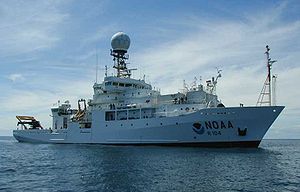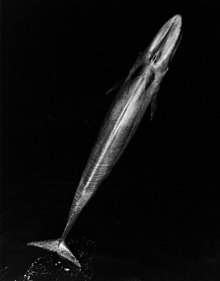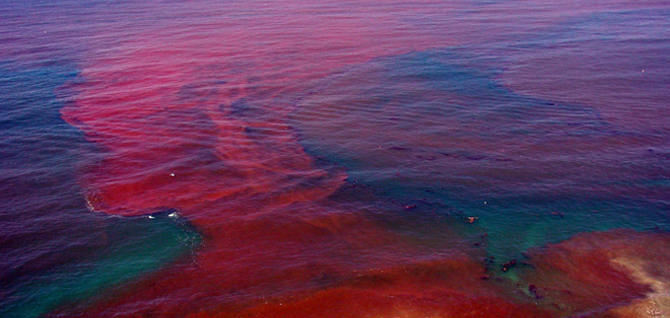The Hydrophiinae, also known as sea snakes, are a subfamily of venomous elapid snakes that inhabit marine environments for most or all of their lives. Though most are extensively adapted to a fully aquatic life and are unable to move on land, having large lungs for long dives. They are found in warm coastal waters from the Indian Ocean to the Pacific and aren't endangered but are very neat creatures.
Sunday, February 24, 2013
Mangroves
Red Mangroves trees are viviparous,meaning the seeds mature while they are still on the tree, and only afterwards do they fall in to the water. For the seed to reach its full level of maturity, it needs to spend about a month in the water.Black mangroves can be distinguished by a system of roots that stick out of the water like pencils, covering the surface in a carpet like formation. These roots contain sponge-like structure and allow gaseous exchange to take place. The seeds of this black mangrove are considerably smaller than that of the red mangrove. White grow on highland and allow salt to be take out by leaves. These rooted areas are prefect for young fish to grow and are where early humans would look for food.
Trash island
The Great Pacific Garbage Patch, also described as the Pacific Trash Vortex, is a gyre of marine debris in the central North Pacific Ocean located roughly between 135°W to 155°W and 35°N and 42°N. The patch extends over an indeterminate area, with estimates ranging very widely depending on the degree of plastic concentration used to define the affected area. Humans need to take better care of their trash and not just throw it oh of their cars because small marine animals die from eating the trash, birds are most common for these related deaths.
It's kinda of amazing but completely disgusting!!
It's kinda of amazing but completely disgusting!!
Acidification
Humans releasing bad chemicals into the air and the water cycle take the chemicals into the water where it breaks down the shells of animals, destroying food sources for all sea life. Decreasing your car usage could help the acidification decrease. But the high levels won't easily reduced.
Monday, February 18, 2013
karenia brevis a dinoflagellates
5 things about plankton
Plankton are tiny floating organisms (living things) that are found in both the sea and ponds and lakes.
The word 'plankton' comes from a Greek word meaning 'wandering'.
Plankton is a general term that includes every marine organism too small and weak to swimfor itself.
The smallest algae are called plankton, but large floating algae (seaweeds) are not called plankton.
Plankton can be divided into phytoplankton, which are tiny plants, and zooplankton, which are tiny animals, but the division is blurred.
Most phytoplankton is very tiny indeed and so called nannoplankton and microplankton. Zooplankton is generally bigger and called macroplankton.
The word 'plankton' comes from a Greek word meaning 'wandering'.
Plankton is a general term that includes every marine organism too small and weak to swimfor itself.
The smallest algae are called plankton, but large floating algae (seaweeds) are not called plankton.
Plankton can be divided into phytoplankton, which are tiny plants, and zooplankton, which are tiny animals, but the division is blurred.
Most phytoplankton is very tiny indeed and so called nannoplankton and microplankton. Zooplankton is generally bigger and called macroplankton.
WHALE
Blue Whale Balaenoptera musculus, Little is known about mating behaviour or breeding grounds. Females typically give birth once every two to three years at the start of the winter after a gestation period of 10 to 12 months.Studies report that as many as 25% of mature blue whales have scars resulting from orca attacks. They are the world largest mammal.
Plankton race
In class we received a bag with various materials too make an object that slowly sank to the bottom, the slowest time won. Me and my partner jokingly used the post-it note that was in the bag and it was extremely slow!! we let the post-it note dry and tested it. it was by far the slowest sinker so i wouldn't have changed it at all and i like how we won with the post-it note!
What is an HAB(harmful algae bloom)?
HAB's are algal bloom events involving toxic or otherwise harmful phytoplankton such as dinoflagellates of the genus Alexandrium and Karenia, or diatoms of the genus Pseudo-nitzschia.
As a result HABs cost coastal communities a substantial amount. Coastal HAB events have been estimated to result in economic impacts in the United States of at least $82 million each year.
These impacts stress the importance of understanding HABs and developing tools to mitigate their impacts and ultimately to control or even prevent them.
Friday 2/9
Photosynthesis by the phytoplankton accounts for up to half of global primary production. They also provide the primary food source for the zooplankton, and together form the base of the oceanic food chain. Larger and larger zooplankton, fish, and mammals depend on these plankton for their survival. Tying it all together, the bacterioplankton play an important role in the recycling and remineralization of materials and energy within the food chain. without plankton their would be no life in the sea.
Dinoflagellates are apart of a group called alveolates. they are most common in marine and freshwater phytoplankton. some are heterotrophic. Diatoms, on the other other, are apart of a group called stramenopiles. they are unicellular, photosynthetic algae with cell walls that contain silica.
Dinoflagellates are apart of a group called alveolates. they are most common in marine and freshwater phytoplankton. some are heterotrophic. Diatoms, on the other other, are apart of a group called stramenopiles. they are unicellular, photosynthetic algae with cell walls that contain silica.
Sepia latimanus
Cuttlefish have large, W-shaped pupils, eight arms, and two tentacles furnished with suckers, with which they secure their prey.Cuttlefish eat small mollusks crabs, shrimp, fish, octopuses, worms, and other cuttlefish. Their predators include dolphins, sharks, fish, seals, seabirds, and other cuttlefish. Their life expectancy is about one to two years. Recent studies indicate cuttlefish are among the most intelligent invertebrates. Cuttlefish also have one of the largest brain-to-body size ratios of all invertebrates and are not endangered.
NOAAS Ronald H. Brown
he Brown is named for former Secretary of Commerce Ron Brown, who was killed in a plane crash while in office. At 274 feet (84 m) in length, she is the largest vessel in the NOAA fleet. The hull of the ship is hardened against ice to allow for Arctic and Antarctic research. The ship has a total of 59 bunk spaces and can seat 30 at a time in her mess room. The ship also includes a 4-bed hospital facility. She carries a complement of six NOAA Corps officers, including one medical officer, 20 crew and a maximum of 32 scientists.

Chemosynthesis
Many microorganisms in dark regions of the oceans also use chemosynthesis to produce biomass from single carbon molecules. Two categories can be distinguished. In the rare sites at which hydrogen molecules (H2) are available, the energy available from the reaction between CO2 and H2 (leading to production of methane, CH4) can be large enough to drive the production of biomass. Alternatively, in most oceanic environments, energy for chemosynthesis derives from reactions in which substances such as hydrogen sulfide are oxidized. This may occur with or without the presence of oxygen.
Importance of the ocean
- The ocean is big
- It has lots of water.
- Many factors influence the ocean.
- It influences the hydro-logical cycle
- Almost all the water that falls on land evaporates from the ocean.
- Water from the ocean falls as rain.
- Water from the ocean influences weather.
- Coastal erosion
- People living along coasts are concerned about erosion.
- Ocean pollution
- Pollution influences recreational use of the ocean.
- Pollution influences what fish can be eaten safely.
- Fisheries and over fishing
- Many countries and regions depend on fish from the sea.
- People like to watch whales and dolphin
 s.
s.
Sunday, February 3, 2013
One simple tool that oceanographers use is nets to collect samples of plant and animal life forms found in the ocean. The smaller nets work close to the water surface and the oceanographers can manually manipulate them. There are also large metal frames that carry multiple nets and a device that sends information back to a ship's laboratories. Oceanographers can study characteristics of the water column, such as depth and temperature, using these large nets
Subscribe to:
Comments (Atom)










